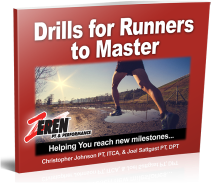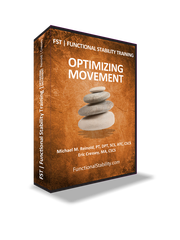|
I recently had the privilege to work with a gifted distance runner, who presented with chronic complaints of bilateral, mid-substance, achilles tendon pain that was primarily symptomatic during the morning as well as with her training. She was a pleasant female, who was under no apparent distress with a relatively clean past medical history. After taking her through a battery of tests, which were predominantly unremarkable, I had her run on the treadmill. After a three minute fitness walking warm up, I instructed her to take up the speed to the point of a comfortable training pace as if she was going out to complete a six to eight mile run. It should be noted that she was running in a pair of Brooks Glycerin (10mm heel to toe differential) that were screened for defects and premature wear. As you will see from the video below, she initially employed a forefoot striking pattern but was not overstriding. After a few minutes of running, I had her stop the treadmill and told her to quiet her feet down before allowing her to resume running at the same pace. Following this cue, she immediately adopted a "full footed strike pattern" while simultaneously reducing the sound of impact. Within two weeks from the time of the initial consultation and zero follow up visits, she contacted me to relay that she had completed her longest run (11 miles) free of any pain and discomfort in the region of the achilles and was also no longer having any stiffness and pain upon weight bearing during the morning hours. This simple case demonstrates how easy it can be to help runners return to training by applying the biopsychosocial (BPS) model of pain, sound clinical reasoning, understanding treadmill analysis and the performance demands of running, while providing a simple cue related to the sound of contact. In this case the "bio" aspect of the BPS model of pain proved to be the primary factor in addressing her complaints while positioning her to return to her meaningful tasks free of pain. Wishing you STONG, HEALTHY, and MINDFUL Running.
0 Comments
|
OUR LATEST
E-BOOK for RUNNERS MIKE REINOLD & ERIC CRESSEY'S FUNCTIONAL STABILITY PART 4
Archives
January 2018
Categories
All
|



 RSS Feed
RSS Feed